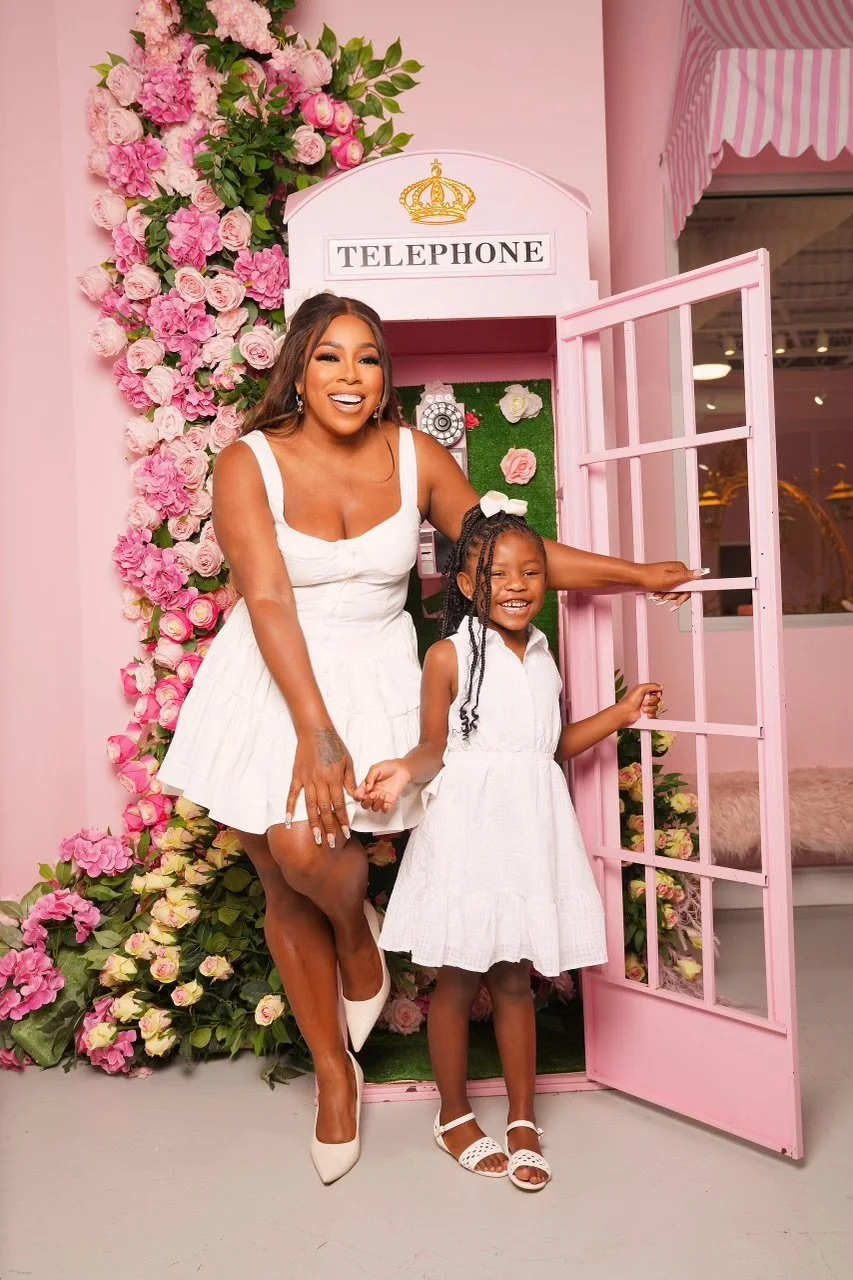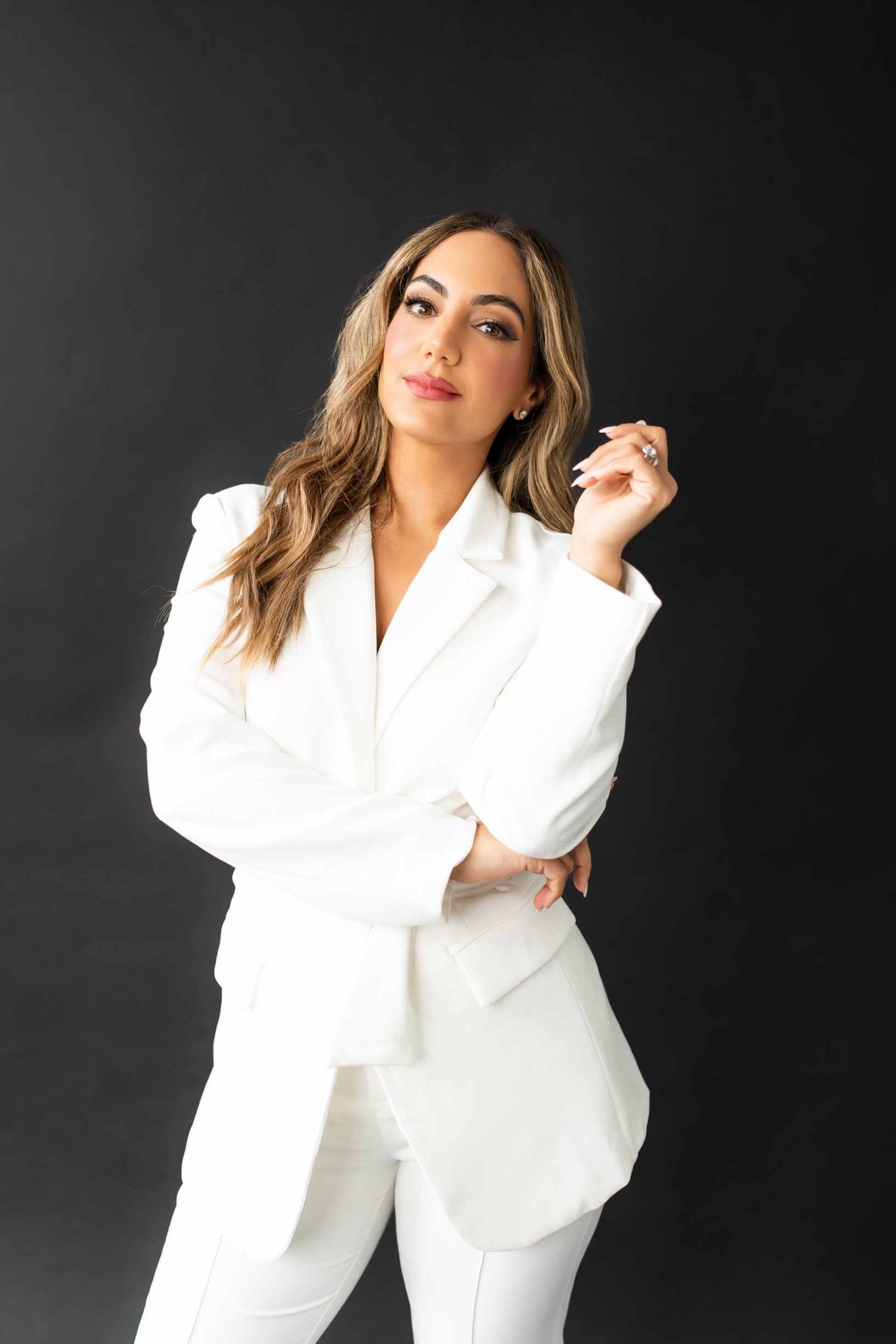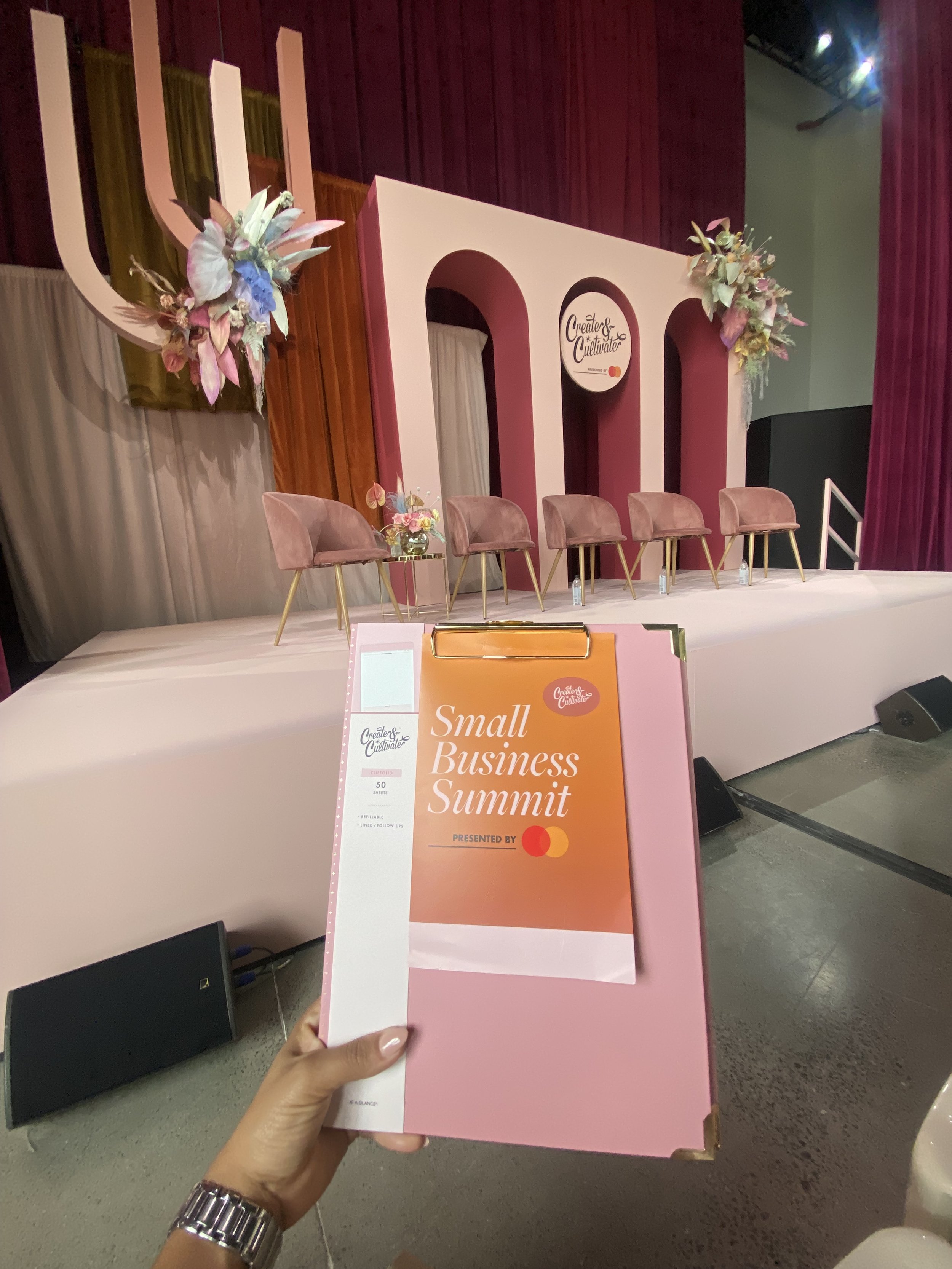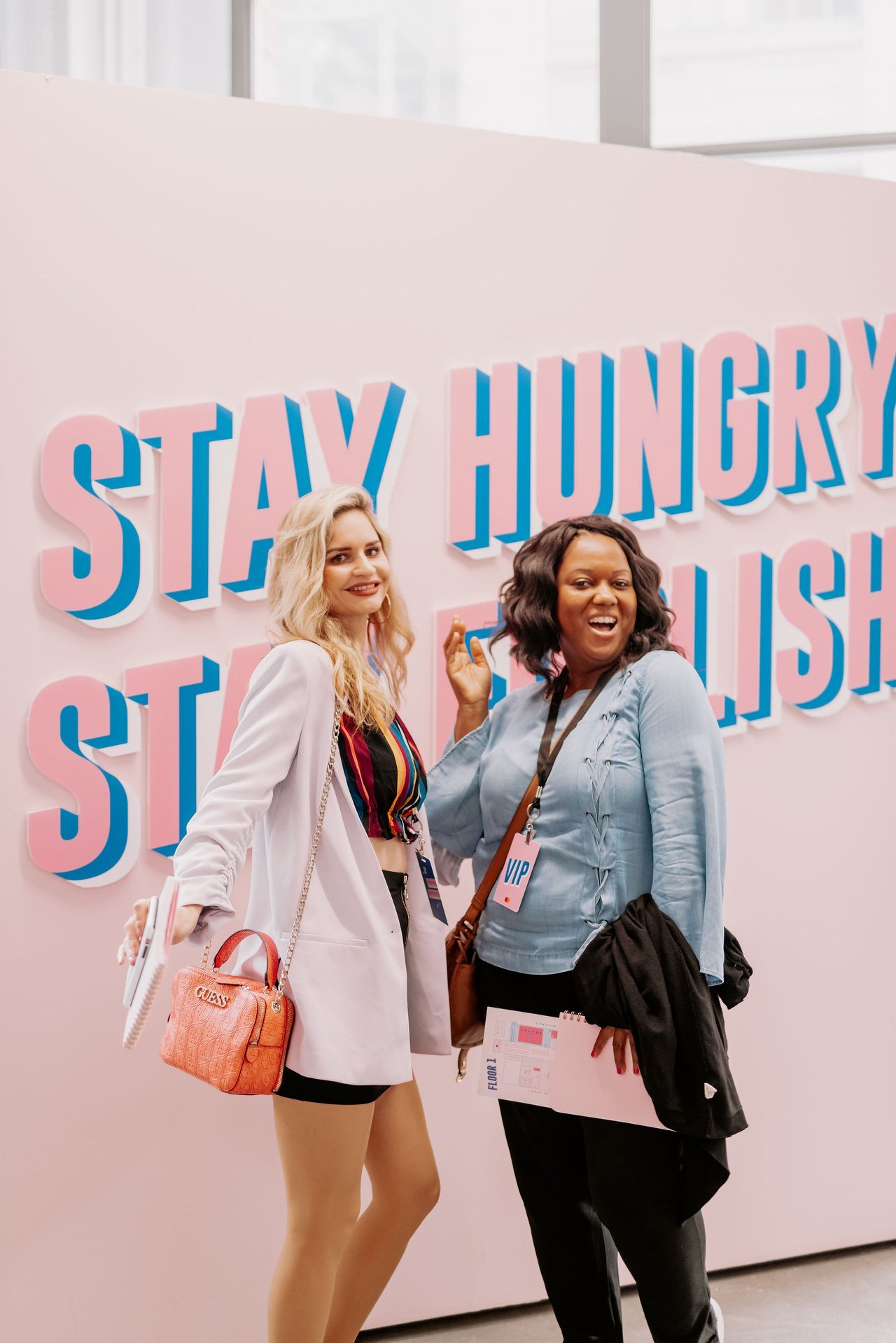As an entrepreneur, you know how critical it is to manage your time well. When each day only offers a limited number of hours to keep your business and your life running, finding the optimal time management systems and tools tailored to your needs is key.
Here, we’ve curated invaluable time management tips from 46 women from the Dreamers & Doers community who are in your shoes.
Next time you’re struggling to complete your daily to-do list or wondering how you’ll squeeze it all in, try these tips to guide you in maximizing your time.
Founder of Wolf & Owl, a color-forward, ready-to-wear brand that seeks to empower women with tailored, capsule-ready pieces for work and play.
My time management tip: I block off 15 minutes at the end of every hour to respond to emails. I don’t deviate from this schedule unless it’s an emergency. I found that I spent large chunks of the day responding to every message as it came in, which would take me out of whatever task I was attempting to complete. Yes, I was able to respond to messages quickly, but it was very often at the cost of other tasks I intended to work on that day. If a message is mission critical, I respond in real time. Otherwise, I will take care of it during my next email session.
Co-Founder and CEO of Sundays, executive assistant service to accelerate parents in their careers while creating more quality time with family.
My time management tip: A game changer for me has been putting my to-do list on my calendar. I used to have a to-do list that was incredibly long, and I never felt like I made any progress. When you put it on your calendar, you have to be realistic about how much time each task is going to take. It helps build momentum when you make time to actually do the things on your list.
Founder and CEO of RobeCurls, an award-winning heatless curling headband that offers effortless curls with a mission to inspire category-creating inventions that empower everyday routines.
My time management tip: I take a break when I need to and reconnect with family and friends. Even meeting a friend for coffee in between tasks can help give me the boost I need to come back to my computer and get the important tasks done. Powering through might seem like the right solution, but taking breaks helps me manage my workload better.
Leadership and Enneagram Coach at Ali Dunn Coaching, a consultancy that breaks down communication barriers within teams and empowers female founders and leaders to love the journey of life and career.
My time management tip: Give yourself the gift of self-awareness. Understanding your strengths and weaknesses when it comes to time management is key. Use your natural strengths to maximize efficiency and delegate the rest. Also, learn your Enneagram type! Understanding your motivation will save you time in all aspects of your life!
Founder and CEO of Katrina Purcel LLC, working with seed to Series C tech companies and nonprofits to create efficient scale and growth.
My time management tip: Don't be afraid to schedule everything. I use my calendar to schedule work sessions for large projects, lead generation activities, as well as reading or writing letters for my gratitude practice. Getting over the hump of feeling like you need to schedule check-ins with your friends helps you to create a more meaningful schedule in your calendar. Color coding the blocks also allows me to have hard data to ensure I’m achieving the balance I'm looking for across the different areas of my life.
Founder and Creative Director of Rou Collective, a creative studio where you never have to grow up.
My time management tip: I assign specific themes to each day of the week, such as "Creative Mondays" for brainstorming and design work or "Networking Tuesdays" for meeting with new clients, discovery calls with potential leads, or focus groups with my team. This focused approach helps me stay organized, reduces task-switching, and ensures I give dedicated attention to the projects I have lined up.
Founder and CEO of Hamilton Raye, a fractional and full-time recruiting solution leading the way in executive assistant support.
My time management tip: I review my entire to-do list against the available working hours for the day. This helps me set realistic goals for what I can accomplish. Additionally, identifying the most important task for the day ensures I prioritize effectively and manage my workload efficiently.
CEO of Catalytic Icon, a peer-selected network of entrepreneurs who value connecting with their deepest desires and having authentic interactions to create sustainable growth and a balanced lifestyle.
My time management tip: I have two pivotal resources I use to help manage my time. One is a decision-making filter I use to assess opportunities and actions throughout my day. The second is maintaining immense clarity regarding my zone of genius. If something does not align with my unique strengths, I assess whether or not I can automate, delegate, or delete the activity.
Coach of KCH Coaching & Advisory, assisting women entrepreneurs and executives in creating rich, impactful businesses and lives that redefine what they believe is possible.
My time management tip: The biggest time waste for me is doing something I feel I should do—copying a strategy or tactic that works for my peers—rather than giving myself permission to build my way. Anything done with the energy of "should" tends not to work well. Focusing only on clients I love, offering services within my zone of genius, and using sales and marketing strategies I enjoy has been incredibly effective.
Founder and CEO of Better Together, galvanizing positive change for purpose-driven organizations through creative strategies, messaging, and branding.
My time management tip: I’ve implemented scheduling "innovation breaks" on my calendar. These are blocks of time dedicated to unstructured thinking, creativity, and problem solving. It allows me to step back from the daily grind, gain fresh perspectives, and generate innovative ideas for Better Together. This practice ensures I'm always bringing my best, most creative self to our projects and staying ahead in a fast-paced industry.
Chief Strategy Officer of Collective Memory, a strategic brand consultancy and multidisciplinary design studio that grows mindshare and delivers market share for emerging and legacy disruptor consumer brands.
My time management tip: I make lists for the entire week. Whatever isn't done at the end of the week gets put on a new list for the next week. The act of having to put something on the list multiple times lights a little fire to just get it done.
Founder and Creative Director of Wildes District, an NYC-based design studio that specializes in luxury and e-commerce brands in the fashion, beauty, lifestyle, and health and wellness sectors.
My time management tip: I often find myself distracted by the significant number of emails, text, and Slack messages throughout my day. To help tune it out during these focused stretches, I downloaded an app called Boomerang, which allows you to pause your inbox temporarily. Then, when you're ready to read the emails, you simply unpause. I do something similar with my phone during focused work time as well.
Founder and CEO of Mrs. SEO, a Seattle-based business offering SEO services, team training, and consulting.
My time management tip: As a busy solopreneur juggling a minimum of 10 clients at any given time, I find having one central repository for information is a game changer when it comes to time management. I use Google Sheets to stay organized, keeping track of each client's blog posts, keyword rankings, and other relevant data. Being able to easily reference this database is huge because I don't have to search around for the information I need; it's like a one-stop shop for running my business effectively!
Founder of Julie Zhu LLC, an award-winning marketing strategist based in NYC.
My time management tip: I've tried a few time management apps, but the only thing that has worked for me is Google Calendar. If it's not on my calendar, it's not happening! I love that I can visualize my month, week, and day—from work meetings to fun candle-making workshops. I'd recommend finding a planner or an app that you can stick to every day.
Founder of SAM+LEO, a teen mental health brand with a line of vegan, gummy vitamins.
My time management tip: I take my non-video calls while walking. It may seem counterintuitive, but this multitasking approach has significantly boosted my mental health and productivity. The physical activity helps me stay focused and energized, and the change of scenery sparks creativity and fresh ideas. Plus, it’s a great way to fit some exercise into a busy schedule.
Designer and Brand Author at Design Minded, a boutique brand studio.
My time management tip: Go slower to go faster. With big projects, people have a tendency to get scattered and rushed for no reason. It’s a panic response, and that kind of anxiety leads to unnecessary rework. Relax. Slow down. Do it right. Time is always better spent when you’re in the right state of mind.
Founder and CEO of Leap_year, building bold brands for serial entrepreneurs and visionary leaders in short intensive sprints.
My time management tip: My entire business is built around time management by selling time-bound productized services. We do all our work in collaborative sprints with clients, so all work blocks are calendared and the process is repeatable. This means I never have piles of client work I need to "get through," which reduces both procrastination and perfectionism.
Founder, Publicist, Speaker, and Podcast Host of The Conscious Publicist, an award-winning PR and thought leadership firm committed to elevating the visibility of conscious, socially impactful leaders.
My time management tip: I’ve implemented the time-blocking method. I allocate specific blocks of time for different tasks throughout my day—both in my business and personal life.
Founder and President of ALL Media, a strategic media firm dedicated to providing a launchpad for ambitious founders and emerging brands by combining holistic media expertise across traditional and digital channels with deep category insights.
My time management tip: I use immersive blocks. Instead of letting my calendar be a chaotic jumble at work or in my personal life, I batch similar activities into focused sessions.
Co-Founder of Purdy Marketing Co., delivering bespoke marketing solutions for tech-forward businesses.
My time management tip: Like most entrepreneurs, I often feel like there aren’t enough hours in the week. In order to make the most of the time I do have, I've adopted a structured approach that begins with meeting-free Mondays and ends with flex Fridays. This framework allows me to start each week with clear objectives and gives me the opportunity to find a productive workflow without interruption.
Co-Founder and Chief Business Officer of Pattern Brands, a portfolio of brands helping you enjoy daily life at home.
My time management tip: I use the two-minute rule: if a task will take two minutes or less, I try to do it immediately. My logic is that the delegation or time that it would take to write on my to-do list would be a less efficient use of time. I’m also a fan of doing a digital detox on Friday afternoon. I clear my calendar and use this time for strategic planning, allowing me to enter the following week with clarity on how I can focus on impact.
Founder and CEO of AR & Company, a forward-thinking agency providing tailored tech and operational solutions, empowering small businesses and entrepreneurs to streamline processes and scale efficiently.
My time management tip: I use ChatGPT. I brain dump all my priorities, deadlines, and time restrictions before asking it to create an ADHD-friendly, time-blocking calendar. It’s a game changer. By doing this, I get a structured schedule that fits my needs, and all I have to do is add the blocks to my calendar. It has streamlined my workflow and kept me on track like never before!
CEO and Head of Strategy of Chykalophia, combining a balanced approach to creativity and technology to deliver transformative digital experiences for forward-thinking, women-led brands in B2B tech.
My time management tip: My day starts with a meaningful breakfast with my son, which grounds me. Following this, I get in a meeting with my team to catch up on project updates—what’s done, what’s being worked on, and what’s stuck. We then plan the No. 1 priority for the day. This approach not only sets a productive tone for the day, but it also empowers my team and keeps me laser-focused on strategic goals. It’s a powerful blend that maximizes efficiency, leverages collective intelligence, and balances my roles as a mom and CEO.
Founder and CEO of Captivating Consulting LLC, a personal brand strategy firm serving corporate women executives.
My time management tip: I take every Monday off for my mental health. I started this about two years ago after I realized I come into every work week at an energy deficit due to the chaos of managing a household all weekend. I spend time outdoors, catch up on my domestic and personal to-do lists, and spend time writing or in therapy.
Founder of Swim, a fractional COO service business leading early-stage companies through growth stages and beyond.
My time management tip: Keep a list of daily to-dos that help you stay confident and sane—like working out, daily affirmations, or completing your gratitude list—and consult it first thing each morning. Knocking out personal self-care first thing feels great.
Founder and CEO of Em Dash Content Studio, a boutique team of expert writers and strategists that enable their clients to show up on page one of search engines and establish themselves as thought leaders.
My time management tip: I schedule meetings back to back. I know this may seem like the opposite of time management, but I find that it forces me to maintain hard stops. I'm a people person, which has led to a lot of meetings going over time. By scheduling meeting blocks, I've become more cognizant of the way time is used in meetings and free for more blocks of open time.
President of Hey Mr Media, a hand-crafted social media and video agency for growth-driven brands in Denver and beyond.
My time management tip: I work seven hours ahead of my team due to our difference in timezone. While I try to mirror their hours to an extent, I realized I’m far less productive and creative in the evenings. Now, I start my day with some exercise and a nutritious meal for my family before diving into creative tasks that require deep thought. This allows me to be super productive before my team and clients need me.
Co-Founder of Relatable Nonprofit, empowering growth-driven people with nonprofit hearts to succeed in consulting.
My time management tip: My co-founder and I have significantly improved our time management ability by adopting calendar blocking and allocating uninterrupted time for specific tasks. We batch tasks by type, dedicating entire days to similar activities, like strategy work or calls. This minimizes the mental energy drain from switching tasks and gives us a daily roadmap. By meticulously categorizing our time, we ensure every minute of our day is purposefully spent.
Founder and CEO of 100 Degrees Consulting, providing CFO and bookkeeping services to nonprofits around the globe.
My time management tip: Rather than working from a giant to-do list with dozens of items that overwhelms me, I choose three things to get done each day. Choosing just three priorities helps me focus better on each task. Because I’m not racing through a giant list, my work quality is higher.
Founder and CEO of Cultiveight Communications, on a mission to help businesses carve their place in the world, no matter their limitations, by developing and optimizing business marketing functions through strategic consulting and facilitation.
My time management tip: I started to pay very close attention to how I performed at different parts of the day. In the morning, I'm more energized, so I have more creative energy. By the afternoon, I only have energy for more administrative or technical tasks. Understanding my natural way of operating, rather than forcing myself to do things at a certain time, helped me to maximize those windows of opportunity, delegate more tasks, and set up a daily structure within my schedule.
Founder and Producer of She's Interesting, a media company on a mission to create more women entrepreneurs and investors.
My time management tip: I create color-coded calendar time blocks using the Eisenhower Matrix to prioritize tasks and meetings. This serves as my daily guide and is almost like a realistic to-do list. It has significantly helped me visually understand what I can complete in a week, and it's a simple, low-cost way to manage my business. It's also a great method for anyone who deals with ADHD decision paralysis.
Founder and CEO of GROWTH MODE PR & Communications Agency, a PR and Communications Agency for brands in GROWTH MODE.
My time management tip: Implement systems that enable you to keep track of priorities meticulously. My team uses ClickUp; the platform enables us to set deadlines, share tasks, prioritize, automate, and so much more. Having a clear picture of what needs to get done and when allows me to set my day and task load accordingly.
Founder and CEO of The Refill Shoppe, a leader in the bulk/zero-waste space offering 80+ custom-scented, closed-loop bath, body, home, and beauty refills right to your door.
My time management tip: Time is our most valuable resource, and how we spend it is everything. Invest it wisely—whether for productivity, play, rest, hard work, and everything in between. Sometimes, a nap, walk, or bike ride is the best thing you can do to get across the finish line and accomplish your current goals.
Founder and Chief Data Strategist of The Bright Arc, a data strategy firm that helps startups to Fortune 500s gain clarity on and monetize their data.
My time management tip: I’m not a systems thinker and realized that one of the largest impediments to my company growing was the fact that I had little documentation and repeatable processes in place. This year I created playbooks for everything that I do more than once, and it has paid off in dividends. I’m able to quickly check through things and easily hand things off to others on my team.
Co-Founder and CEO of So Syncd, a media company that focused on dating, personality types, and personal growth.
My time management tip: I stay in touch with how I'm feeling each day to optimize my time. I'll have a list of tasks I'll want to complete that day. But if I don't feel productive in a given moment, I'll rearrange my schedule to tackle a different task.
Founder of WomensLaxDrills, the largest educational membership and community platform for women's lacrosse coaches.
My time management tip: I don’t schedule calls on Mondays or Fridays. This allows me to start the week with uninterrupted time for planning and deep work on Mondays and wrap up and reflect on the week on Fridays. By doing this, I’ve found that I can maintain a better work-life balance and enhance the quality of my work.
CEO of Belgian Boys, creating whole ingredient breakfast with a European twist so families can prep less, smile more, and indulge better.
My time management tip: I’m working on perfecting uni-tasking, which is doing one thing from start to end with complete focus. Multitasking might sound efficient, but it really doesn't work for me. Now, I combine uni-tasking with my task list organized into three groups: 5- to 10-minute tasks, 30-minute tasks, and 1+ hour tasks. This way, I can make the most of any block of time I have and get things done.
Founder and CEO of Admin Boutique, providing small businesses with the dynamic team they need to thrive.
My time management tip: I track my time and set a focused schedule. Initially, I had no idea what I was spending my time on, so tracking my time for a few months was eye-opening. I discovered how much I was spending on unproductive tasks. This insight allowed me to delegate unnecessary tasks and create a realistic schedule, which maximized my focus time.
Co-Founder of WeNatal, revolutionizing the fertility industry with a first-of-its-kind prenatal supplement optimized for both partners.
My time management tip: As a busy mom and wife, I take full advantage of the flexibility that being a business owner gives me to create my own work schedule. I cram most of my workday into the hours of 8 a.m. to 3 p.m. so I can be present for my girls before and after school, and for my husband in the evenings.
Founder and CEO of Leaves of Leisure, premium teas with zero or low caffeine, created for everyday routines, with nostalgic flavors inspired by leisure activities.
My time management tip: I live and breathe by my calendar. To ensure I have time for everything that matters most—like brainstorming, meeting up with friends, yoga class, journaling, and reading—I block out specific times for these activities. If it's on the calendar, I do it; if it's not, it risks being overtaken by work commitments. By preemptively scheduling personal time, I maintain a well-balanced life, ensuring my priorities aren’t overshadowed by unplanned work tasks.
Founder, CEO, and Visionary of Amami Luxury, inspiring people through bold and supremely crafted luxury goods, creating a movement rooted in self-expression and the celebration of identity.
My time management tip: I manifest in the morning. This practice is crucial because it helps me clearly visualize my personal and professional goals. It reassures me that I am aligned with my passion and purpose. Manifesting also helps reduce my anxiety and boosts my productivity. In this calm state, I can effectively employ other time management strategies, such as prioritizing tasks, accomplishing quick wins, using project management tools to organize my thoughts, and delegating tasks to my team members.
Sr. Director and Global Integrated Digital Marketing at NVIDIA, the accelerated computing company transforming the world's largest industries, and profoundly impacting society.
My time management tip: Taking time to show up for myself has enabled me to show up for others. I wake up early to prioritize my day, check emails, and then I head to the Pilates studio. Prioritizing my health enables me to have a clear mind so I can focus on everything else. Health is wealth.
Founder and CEO of Code Financial Services, empowering small businesses with tools and guidance to thrive, going beyond bookkeeping to support business growth.
My time management tip: As a single mother managing a business, I rely on habit stacking, which is gradually incorporating new lifestyle habits into your routine by associating them with an already-established habit to optimize my day and incorporate essential tasks. I frequently take calls while hiking, combining fresh air and exercise with productivity. As an early riser, I find the quiet hours of 4 or 5 a.m. ideal for tackling my most challenging projects. While early mornings may not suit everyone, dedicating focused time at any point during the day has been instrumental in managing my workload and maintaining my well-being.
Founder and CEO of Sage Haus, a platform helping busy parents reclaim their time by outsourcing the mental load and creating home systems to support a healthy division of labor.
My time management tip: Buy back your time. Make an investment in you by outsourcing tasks that need to get done but don't need to get done by you. For example, after my second child, we hired a house manager who helps us with everything from laundry to meal prep, as well as childcare for date nights. Not only does this result in more time back to spend growing your career or business or spending time with your family, but it relieves you from the mental load those tasks are holding space for.
Founder of MissPoppins, a 24/7 modern digital village that reinvents the traditional support network for raising a child by integrating a marketplace that connects parents with expert coaches and a supportive community.
My time management tip: As a twin-mompreneur, every minute of productivity is precious. I don't wear multitasking as a badge of honor. Instead, I use The Pomodoro Technique as an effective time management tool that encourages task-switching instead of multitasking. By breaking work into focused intervals with regular breaks, I’m able to concentrate better and prevent burnout. It promotes a structured approach to completing tasks, increasing my focus and efficiency.
Founder of DotConnect, building teams, companies, and cultures.
My time management tip: I theme my days based on the type of work and time block. Generally, I keep Friday open for administrative, catch-up, and deep work. My team calls are all on Tuesdays, so our team can use an hour or two on Monday, rather than Sunday, to prepare. My client calls are typically on Wednesdays, and my coaching calls are on Thursdays. Theming my days allows me not to context switch and get into a flow state much more easily.
























































